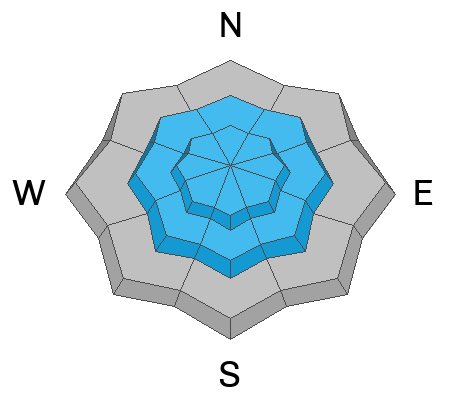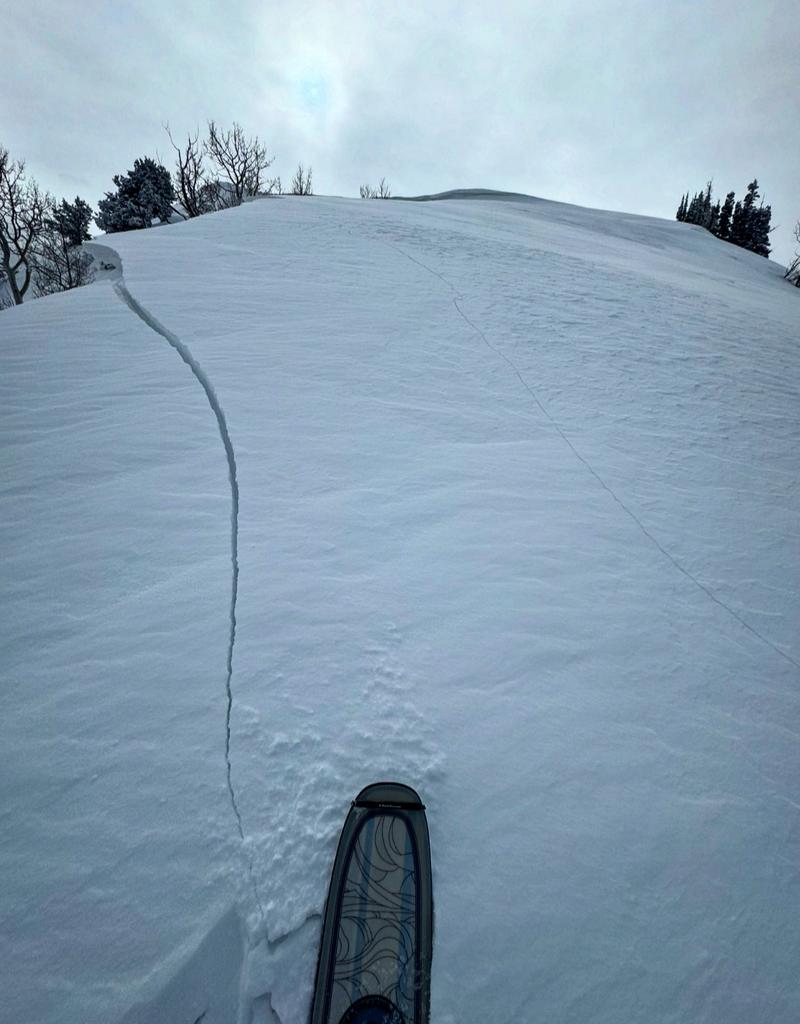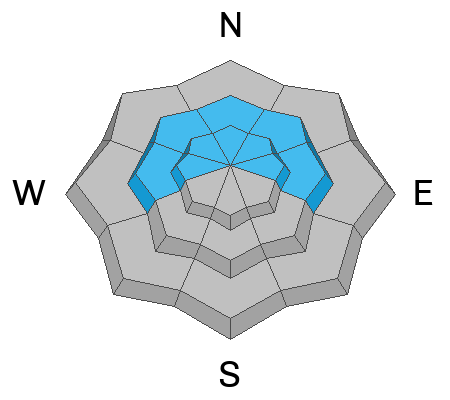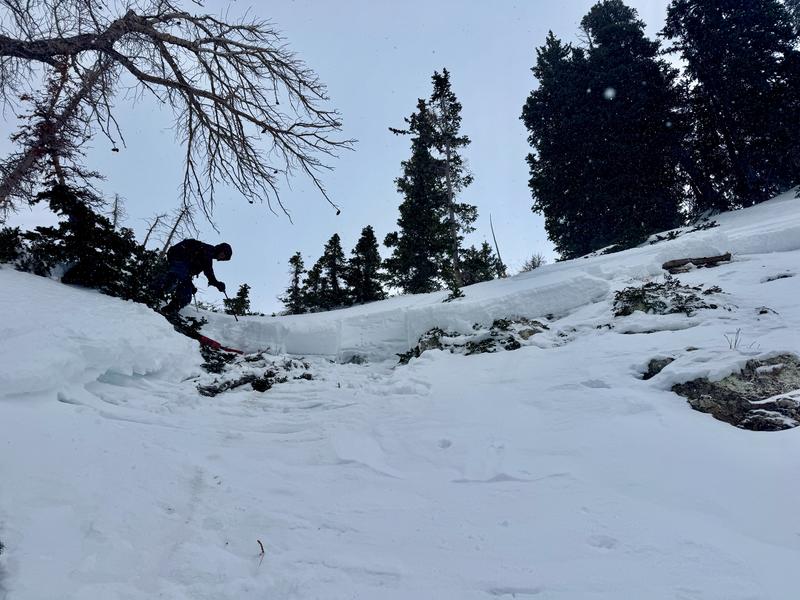Forecast for the Salt Lake Area Mountains

Issued by Dave Kelly on
Monday morning, January 20, 2025
Monday morning, January 20, 2025
Today, there is a MODERATE avalanche danger for triggering an avalanche failing into the buried facets on mid and upper elevation northwest-north-east facing aspects. There is a LOW avalanche danger on all other aspects and elevations, where you may trigger a shallow wind-drifted snow avalanche.
The in-your-face nature of this avalanche problem is less apparent than it was even a few days ago. Special attention should be given to steep slopes that harbor weak faceted snow near the ground. Areas where you may trigger an avalanche 2'-4' deep will be thinner rockier zones and areas that avalanched during the holiday cycle and have been re-loaded with more wind and snow.
The in-your-face nature of this avalanche problem is less apparent than it was even a few days ago. Special attention should be given to steep slopes that harbor weak faceted snow near the ground. Areas where you may trigger an avalanche 2'-4' deep will be thinner rockier zones and areas that avalanched during the holiday cycle and have been re-loaded with more wind and snow.
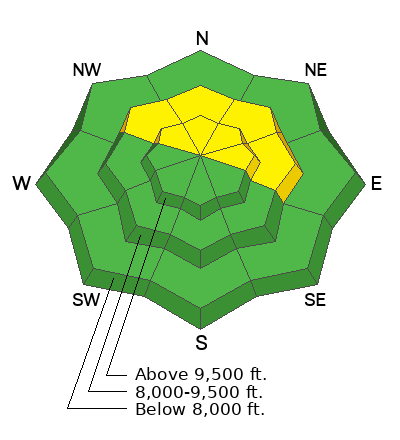
Low
Moderate
Considerable
High
Extreme
Learn how to read the forecast here


